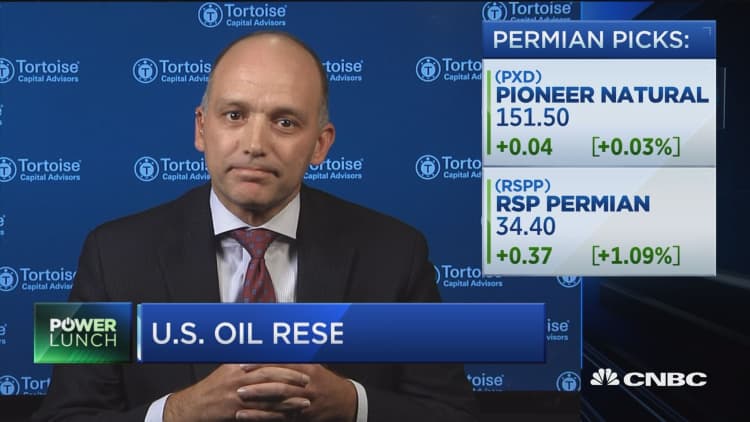


Oil prices could be key for markets Thursday as investors look for catalysts while awaiting the monthly employment report, scheduled for a Friday morning release.
"You see a sell-off in crude oil again, and that can change this whole picture," said Alan Rechtschaffen, financial advisor and senior vice president at UBS Wealth Management Americas.
"Fifty-dollar crude oil prices do not seem to be sustainable right now. If you see crude oil fall off again, below $40 again," he said, "that could really hurt the global picture."
U.S. crude oil futures settled up 83 cents, or 1.78 percent, at $47.43 a barrel Wednesday after a more than 4.5 percent decline Tuesday. U.S. benchmark West Texas Intermediate crude extended gains in late trade after the American Petroleum Institute reported a larger-than-expected drawdown of 6.7 million barrels, according to Reuters.
Weekly crude inventory data from the U.S. Energy Information Administration is scheduled for release Thursday morning. Analysts polled by Reuters expect a 2.5-million-barrel decline, after a fall of about 4 million barrels the prior week.
The intraday reversal in oil prices helped U.S. stocks recover opening losses Wednesday and finish on the upside. The closed 11.18 points higher at 2,099.73, just below the key 2,100 level.
"The U.S. continues to hold up quite well," said Ryan Larson, head of equity trading, U.S, at RBC Global Asset Management, who added that there's a "very defined range of 2,050 to 2,100."
Traders also cited support for stocks coming from stabilization in the 10-year Treasury yield after it touched a record low. They also pointed to the dollar-yen's recovery to near 101 after testing the psychologically key 100 level.
Investors may get some clues to Friday's nonfarm payrolls report when Thursday's ADP National Employment report and weekly jobless claims come out. The private ADP payrolls report is expected to show the addition of 159,000 jobs in June, according to a Reuters poll.
The ADP report does not necessarily foreshadow the nonfarm payrolls data: The May ADP data showed 173,000 jobs, while the government's report was a disappointing 38,000.
Weekly jobless claims are expected to edge higher to 270,000. The Challenger job cut report is also due Thursday morning.
"We want to see data points that suggest moderate growth rather than flatline or declining growth," Larson said, noting that markets now generally expect the Federal Reserve to keep rates lower for longer.
The ADP and EIA reports come a day later than usual this week, since U.S. markets were closed Monday for Independence Day.
PepsiCo earnings, scheduled for release ahead of Thursday's market open, will also be watched for any comments on the impact of Brexit on future business activity.
Overseas, China foreign exchange reserves scheduled for release overnight will also be in focus as investors watch for indications on capital outflows and the central bank's spending to support the yuan.
On Wednesday in China, the People's Bank of China set the official midpoint rate of the yuan against the dollar at 6.6857, the weakest since November 2010, according to Reuters.
"We think what's going on is the People's Bank of China has demonstrated a new resolve to depreciate the RMB on a gradual basis and avoid the large one-offs, like we had in August, and we expect the PBoC to manage a depreciation of 5 percent a year. That should keep outflows more manageable," said Paul Christopher, head global market strategist for Wells Fargo Investment Institute.
He said that if the decline in foreign exchange reserves remains within a $50 to $60 billion range, investors should not be too concerned.
The level of reserves fell in May to $3.19 trillion, their lowest since December 2011.


